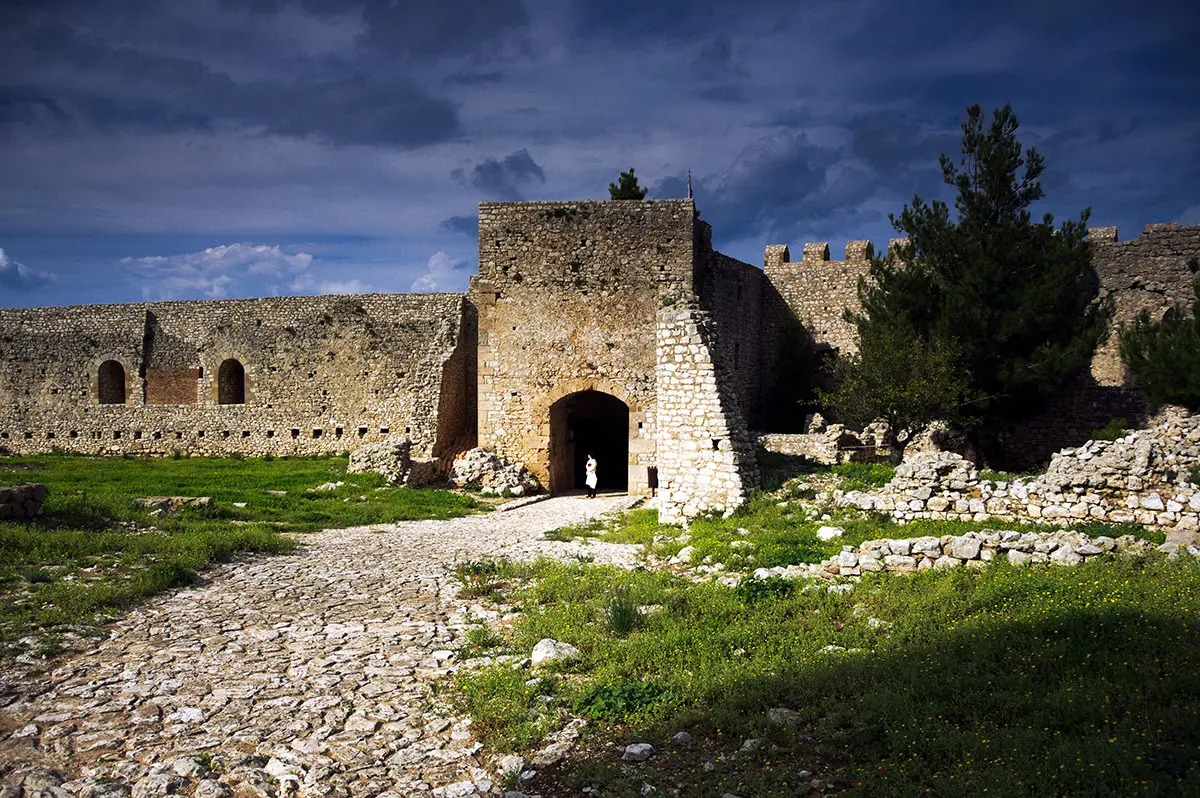Chlemoutsi Castle
The castle was originally built by the Franks and was called Clermont, later known as Chlemoutsi in Greek. Later, it changed its name to Tornese, as it was believed to be the site of the famous Frankish mint of Tornese coins.
The castle of Chlemucci was raised by Godefridus II Villehardouin, using the lucrative income from the monasteries of the Moravian clergy of the Latin clergy. According to the Byzantine Federal Numismatic Institute (BON), excavations in 1962 by SERVAIS confirmed that its walls were not built on prehistoric traces. Godefridus II proceeded to build the castle because of the refusal of the clerical barons of the Peloponnese to support him in the subjugation of other areas of the Peloponnese, such as Monemvasia, etc. The money he used came from the confiscation of most of the ecclesiastical properties of the Latin clergy.
The chosen location for the castle was strategic, as it was built on the highest and most central point of Chelonata, at an altitude of 250 m. From the top of the hill, Chlemoutsi protected the commercial port of Glarentza and the capital of the principality of Andravida, ensuring control of the area that was the center of the Frankish possessions in Moria, which was in a period of prosperity during the time of the Villehardoi.
During the reconstruction period that followed the death of William Villehardouin and lasted throughout the 14th century, Hlemucci was the subject of claims by various nobles. It was also used as a prison for princes and other officials. It was here that the last descendant of the Villehardins, Margaret of Acova, was held and died, as she was considered responsible for the claim of Moravia by the Catalans, who temporarily conquered the castle in 1315.
At the beginning of the 15th century, the castle passed into the possession of Karolos Tokkos, Count of Kefalonia and despot of Epirus. In 1427 it was peacefully transferred to Constantine Palaiologos after his marriage to Tokko’s daughter, and he used it as a military and administrative center in preparation for the attack on Patras. The castle remained in use until the years of the Greek Revolution of 1821, passing through the hands of the Turks (1460-1687, 1715-1821) and the Venetians (1687-1715). It is noted, however, that after the end of Frankish rule it gradually began to lose its important role in the defence of the region.
Neither the Greeks nor the Venetians carried out any work on the castle, while the Turks carried out small-scale interventions to reinforce it. Part of the castle suffered considerable damage during the bombardment by Ibrahim in 1825. Today, Chlemoutsi, retaining its original character intact from later interventions, remains one of the most important and well-preserved castles in Greece.
The castle consists of two enclosures. The outer enclosure has a polygonal shape. On the perimeter of the walls, there are ruins of buildings belonging to the original 13th-century construction, while inside the walls there are traces of buildings, of which a Turkish mosque is the most elaborate.
During the Turkish occupation, the present main entrance, the battlements, and the three towers on the western side of the enclosure were added. At the southeastern end, the hexagonal inner precinct rises, consisting of a series of vaulted halls around a large central courtyard. Most of the halls were originally two-story and were heated by fireplaces, similar in form to those of the buildings in the outer enclosure. In terms of morphology, the high, semi-elliptical arches covering the halls and the lowered or slightly pointed arches of the openings are evident, indicating the western origin of the founders of the castle.

